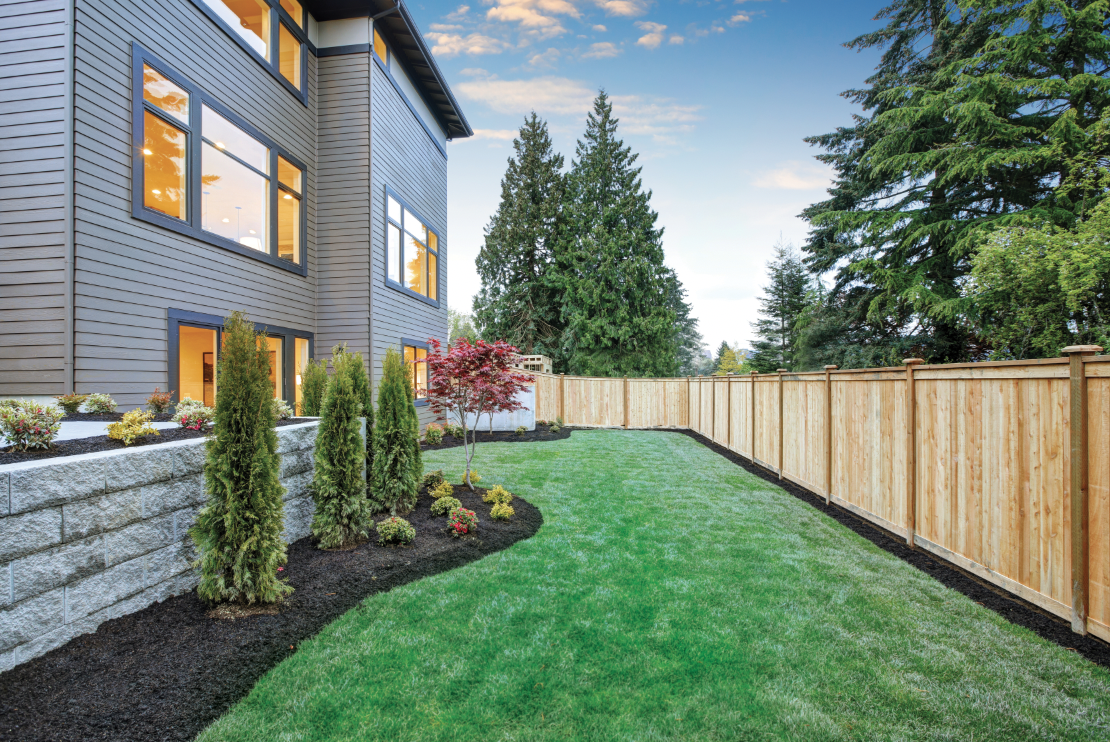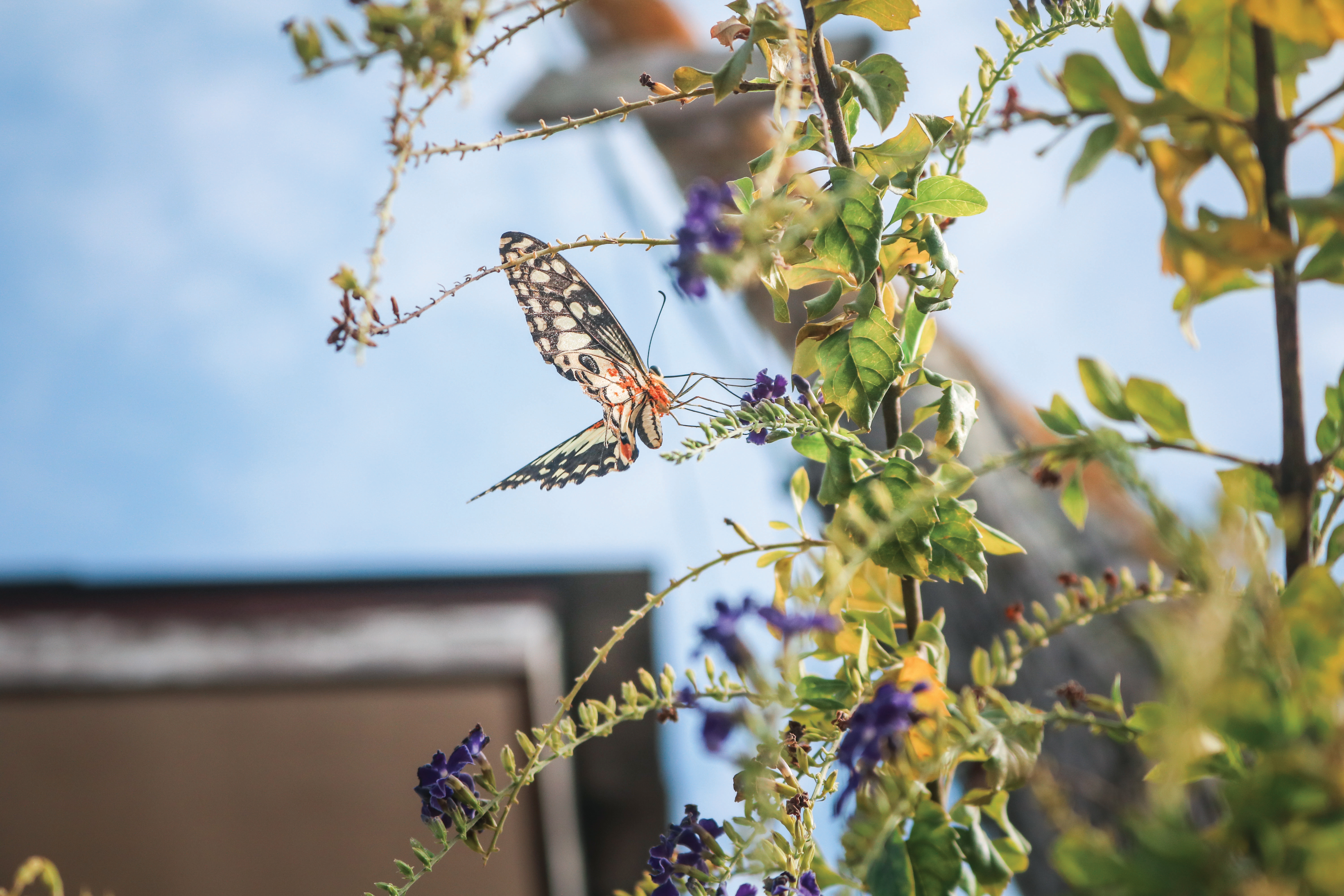Does the grass always look greener on the other side of your property line? Keeping up with the Jones’ yard doesn’t have to be a huge chore. Here’s how you can have a lush, green, healthy — and environmentally-friendly — lawn that boosts curb appeal and makes your yard a place you’ll want to run barefoot all summer long!
Care and Keeping
Even if you’re not selling, a neat and healthy yard adds major curb appeal to your home. To begin, clear away any dead debris and leaves. Water smart — give your lawn a deep drink by watering in the cool morning for 20-40 minutes every four days or more frequently in hot weather (check to ensure your area isn’t under a water restriction). For an extra lush lawn, spread grass seed every spring and water it well. Think all grass seems the same? Think again! There are many varieties, so check with a local garden center for one that’s made for your climate and soil type.
Read up on your yard! There are plenty of different varieties of lawn grass out there. Find the one that works best for your local climate and soil type.

Grass is grass?
Not so fast! Check with a local garden center for a grass seed made for your climate and soil type.
The power of pollination!
When a butterfly lands on a flower to drink its nectar, the flower’s pollen attaches to the butterfly. When the butterfly moves from flower to flower drinking more nectar, the pollen is transferred!

Victory Gardens
When a butterfly lands on a flower to drink its nectar, pollen attaches to the butterfly. The butterfly carries the pollen from flower-to-flower, helping your garden bloom!
Starting a little garden is a great way to add some visual interest to your yard. If your lawn is just a wide expanse of grass, why not put some of that space to work for you? Though it’s an investment of time, effort, and a little money, a successful garden can be a great addition to your household.
There are plenty of different ways to install a garden, too. Just digging furrows in the soil will always work but consider installing raised garden beds for added appeal — and to help keep out rabbits and other yard critters. If your lawn is small or municipal regulations prevent you from planting a full-on garden, you can also plant a container garden in pots on a deck or patio.
Aside from livening up your lawn and being the economical choice, gardening can be a great pleasure. It’s rewarding to spend a summer afternoon weeding and watering, and the dividends it pays in fruits, vegetables, and herbs are second to none. Plus, gardens have a way of producing more than you’d ever thought they would, and sharing extra veggies becomes a great way to earn points with the neighbors.
Drum Up Some Buzz
It’s been a hot topic in recent years that the bees need saving, but what does that entail for the average person? Creating a pollinator-friendly yard may be easier than you think. It could also save you some yard work—and money! The first step is also the most important and the easiest: refrain from using pesticides and herbicides on your lawn. While these chemicals will take care of annoying pests, they can also be harmful to pollinators like bees and butterflies.
Next, leave your lawn to a more natural look. Bees and other pollinators are attracted to grasses that grow longer than three inches because these can flower and produce seeds. Additionally, leave ‘weeds’ in your lawn like dandelions and clover to create places for pollinators to do what they do best!
Finally, there’s the showstopper piece — a beautiful butterfly garden! Try landscaping with local wildflowers and grasses, as well as pollinator staples like milkweed. Some cities will even subsidize the costs of installing a pollinator-friendly garden. Make sure to choose plants that are right for your area, and keep the pollinators coming by cultivating plants that bloom throughout the growing season. Then add a cute little sign to spread the word, kick back, and enjoy watching your new little friends!
Xeriscaping And You
Though it sounds like something out of a sci-
fi movie, xeriscaping is a very practical and environmentally friendly approach to yard
care. Also called drought-resistant landscaping, xeriscaping is the practice of choosing plants and other forms of yard decor that don’t require watering. The idea is to save water by creating a garden that can thrive on the water that already exists in the environment. It’s popular in arid regions like the American West, but xeriscaping is a smart choice no matter where you live. It’s not just about drought-resistant plant life, either —
a xeriscaped yard can also include alternatives
to the traditional lawn or garden, trading them out for soil, mulch, or rock gardens instead. When done well, a xeriscaped yard is a modern, environmentally friendly work of art that’s sure to liven up the look of your home.
Takeaways
While completely overhauling your lawn can seem like a project with a capital “P”, it only requires the amount of work you’re able to put into it. If you can only spare a little time each week, consider letting your grass grow out to attract pollinators or installing a low-maintenance garden. If you’re willing to really put some elbow grease into it, transform your yard with a pollinator-friendly garden, or even make it into a water-saving xeriscaped masterwork! There’s something that everyone can do to help create a more beautiful and environmentally-conscious neighborhood.

